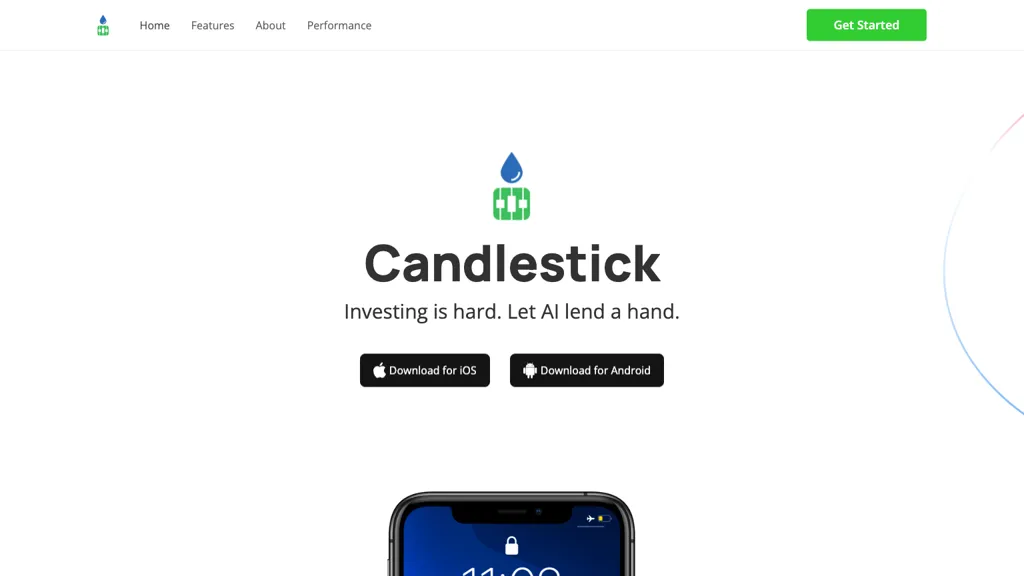The User Interface (UI) and the User Experience (UX) of AI platforms for predicting and analyzing stocks play a critical role in ensuring usability, efficiency as well as overall satisfaction. An ineffective user interface can hinder decisions even if the AI models behind it are robust. These are the top 10 guidelines to evaluate the user interface/UX of these platforms:
1. Evaluate Intuitiveness and Ease of Use
Navigation: Make sure that the platform is simple to use, using menus and buttons that are easy to grasp as well as workflows.
Learning curve: Evaluate the speed at which a novice user can understand and use the platform, without requiring lengthy training.
Look for similar designs (e.g. color schemes and button styles) across all platforms.
2. Look for customizability
Dashboard customization - Make sure that users can customize dashboards using relevant charts, metrics, and information.
Layout flexibility is important: Make sure you can change the layout and size of charts as well as widgets and tables.
Themes and preference. Examine whether there are dark/light settings or other visual preferences.
3. Visualize data with ease
Quality of the chart - Make sure that the website has interactive charts with high resolution (e.g., line charts and candlestick charts) that include zooming, panning, and other options.
Visual clarity: Ensure that your data are clearly displayed with labels, legends and tooltips.
Real-time updates: Make sure that the visualizations are updated in real-time to reflect any changes in the market.
4. Test Speed and Responsiveness
Loading speed: Check that the platform is loaded fast, even when there are large data sets.
Real-time performance: Check whether the platform is able to manage real-time feeds of data without lag or delays.
Cross-device Compatibility: Check if the platform works seamlessly with different gadgets (desktops or smartphones).
5. Assess Accessibility
Mobile app availability: Check if the platform has an app for mobile devices that has full capabilities to trade on the go.
Keyboard shortcuts: Make sure your platform supports keyboard shortcuts that are available to power users.
Accessibility features: Determine if the platform is compliant with accessibility standards (e.g. screen reader compatibility, high contrast modes).
6. Check out the Search and Filtering Functions and Examine Search
Search functionality users are expected to be able look up stocks or indices.
Advanced filters: Discover if there are any filters that you can apply to the results.
Saved search: Determine if the platform allows users save frequently used searches as well as filters.
7. Make sure you are aware of alerts and notifications.
Customizable alarms: Make sure users have the ability to set up alarms to be specific for certain conditions.
Notification delivery: Ensure that notifications are delivered via multiple channels, e.g. SMS, emails, or in-app notifications.
Verify the promptness and the accuracy of alarms.
8. Review the integration with other tools
Broker integration: Ensure that the platform is fully integrated with your broker account in order to assist in the execution of trades.
API access: Find out whether advanced users have access to the API to develop their own custom tools or workflows.
Third-party interfaces: Make sure you know if the platform offers integrations with third-party software (e.g. Excel or Google Sheets) and trading robots.
9. Review Support and Help Features
Tutorials for onboarding: Find out if the platform provides tutorials or walkthroughs for new users.
Help center. Make sure your platform has an extensive help center.
Customer service: Check to find out if the platform has responsive customer support.
10. Test for Overall Satisfaction of Users
Feedback from users: Read research reviews and testimonials to gauge general satisfaction of users with the platform's UI/UX.
Free trial period: Test the platform at no cost and test its functionality.
Error handling: Check how the platform handles errors or edge cases (e.g. incorrect inputs and server downtime).
Bonus Tips
Aesthetics Functionality is important, but, a visually appealing design can enhance the overall user experience.
Performance under pressure Test your platform's performance in highly volatile markets to make sure it is stable and responsive.
Check for active forums and communities. Users can post their thoughts and suggestions in these communities.
Use these guidelines to evaluate the user interface and UX of AI platform for analyzing and predicting stocks. This will ensure that they are user-friendly and efficient. They must also be able to meet the requirements of trading. A great UI/UX can significantly enhance your ability to make informed choices and effectively execute trades. Take a look at the best click here about ai investment platform for blog recommendations including ai stocks, ai investing platform, ai trade, incite, ai for investing, trading with ai, investment ai, ai trade, trading with ai, investment ai and more.

Top 10 Tips For Evaluating Social And Community Features In Ai Technology For Predicting And Analysing Trading Platforms
In order to better know how users interact, learn and share it is crucial to analyze the community and social aspects of AI-driven stock trading platforms. These features can greatly enhance the user experience and offer invaluable assistance. Here are 10 top suggestions for assessing the community and social aspects of these platforms.
1. Active User Community
Find out whether there is a lively community of users that participates regularly in discussions and shares information.
Why is that a community that is active creates an environment that allows users to grow and learn by sharing their experiences.
2. Discussion Boards and Forums
Check the activity and quality of message boards and discussions forums.
Forums are a great opportunity for users to share ideas, discuss trends and even ask questions.
3. Social Media Integration
Tips - Make sure that the platform can be linked with other social media platforms (e.g. Twitter and LinkedIn) to post updates and insights.
The benefits of social media integration increase engagement and provide current market updates in real time.
4. User-Generated Material
Look for features which allow users to share and create content. For instance, you can create blogs, articles or trading strategies.
Why is that user-generated content promotes a collaborative environment, and provide diverse perspectives.
5. Expert Contributions
Tip: Find out whether there are any contributions from experts from the industry, such as AI specialists or market analysts.
The reason: Expert insights add credibility and depth to discussions in the community.
6. Chat, Real-Time Messaging and Chat in Real Time
Tips: Examine the possibility of live chat or messaging services for instant communication among users.
Why: Real-time interaction facilitates quick data exchange and collaboration.
7. Community Moderation and Support
Tips: Assess the amount of support and moderation provided by the community.
Why: A positive and respectful atmosphere is created through effective moderation, while customer support quickly resolves user issues.
8. Events and Webinars
Tip: Find out whether there are live sessions, webinars, or Q&A sessions that are hosted by experts.
Why: These events provide opportunities for learning and direct contact with industry experts.
9. User Reviews and Feedback
Look for platforms that let users leave reviews or feedback on their community features and platform.
Why: User feedback is used to identify strengths and areas for improvement within the community ecosystem.
10. Rewards and Gamification
Tip: Determine whether the platform offers games, like badges or leaderboards.
Gamification can motivate users to be more engaged with the platform and community.
Bonus Tip - Security and Privacy
Make sure that the community and social features have robust security and privacy measures to safeguard user data and their interactions.
It is possible to evaluate these elements to determine if you're capable of finding a platform that offers a supportive active community that can help you improve your trading abilities and knowledge. Have a look at the most popular read this post here on ai tools for trading for blog examples including stock predictor, free ai tool for stock market india, ai software stocks, best ai for stock trading, chart analysis ai, ai stock price prediction, invest ai, ai in stock market, ai in stock market, best ai penny stocks and more.
